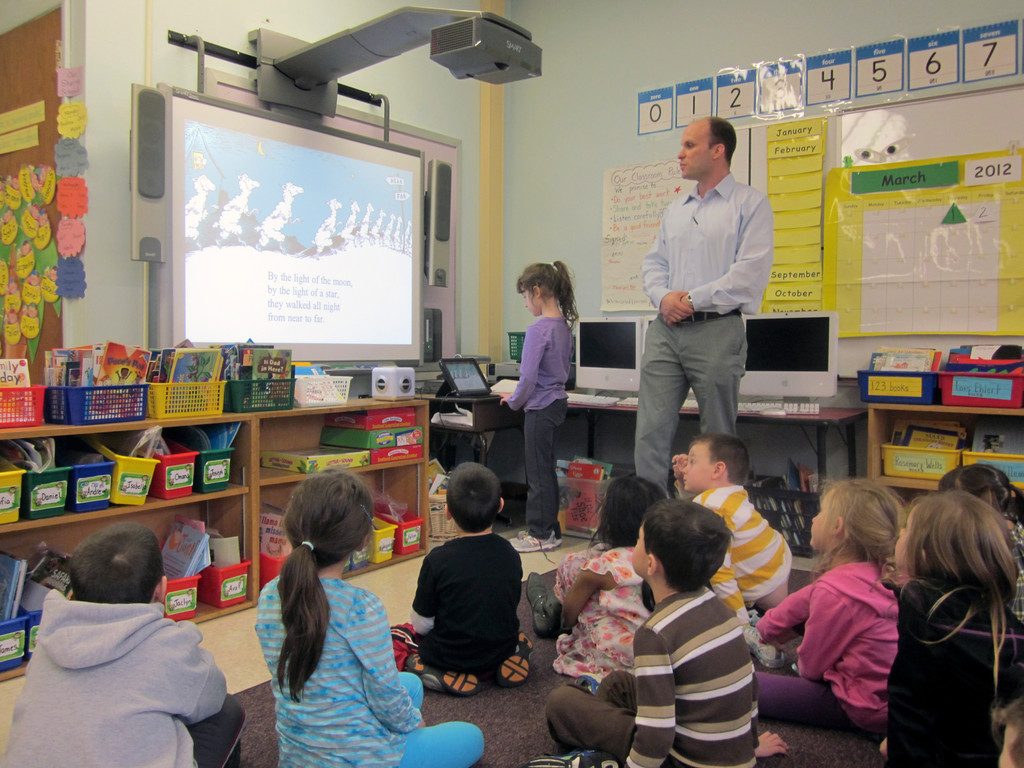Dr. Seuss brought to life with the iPad
School district uses new technologies to teach children to read.
Dr. Seuss’s “One Fish Two Fish Red Fish Blue Fish” has been a staple of children’s literature since its publication in 1960. The book’s ceaseless rhymes and colorful illustrations present an easy and fun way to introduce children to reading.
However, as imaginative as Dr. Seuss was, even he couldn’t have foreseen that his book would one day be presented to school children on iPads and Smart Boards.
On March 2, the day of Dr. Seuss’s 108th birthday, Chatterton Elementary School in Merrick held special lessons to introduce technology to kindergarten classes.
Daniel Fitch, the school’s speech-language teacher, presented “One Fish Two Fish Red Fish Blue Fish” to the 5-year-olds through a process called video mirroring. The iPad, which contains an “e-book,” connects to a Smart Board, which shows the book to the students, page by page.
Smart Boards are found in every classroom, not only at Chatterton, but also throughout the Merrick District. “It adds a whole new level of visuals to children when they are learning,” said Fitch, who has taught speech-language at Chatterton for three years. “It’s very helpful in that regard.”
March 2 is recognized annually as “Read Across America Day” by the National Education Association to commemorate Dr. Seuss and encourage children to read. The name Dr. Seuss was a pseudonym of author Theodor Seuss Geisel. He died in 1991, but not after publishing more than 40 children’s books that have sold over 220 million copies worldwide. “If a large national organization still sees the benefits in what Dr. Seuss created, I think that we can definitely apply that at Chatterton,” Fitch said.
In Patricia Kelleher’s 16-student kindergarten class, Fitch picked students one by one to read a page from the Dr. Seuss book, and then asked them to “turn the page,” which involved them swiping their hands across the iPad screen, which then turned the pages on the Smart Board.
On each page of the book, the children could tap certain words or numbers, which would then be spoken aloud on the Smart Board. Additionally, children could tap certain animals to hear the noises that they make, like the “moo” of a cow or the “oink” of a pig.






